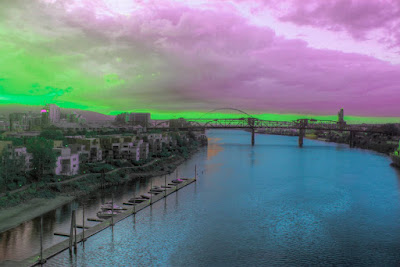It's been a while. I haven't stopped taking photos...there is a huge backlog of them, most of them hastily posted to Facebook and/or my
overflow website. I've also been managing to post photos to the Boston.com RAW website, which has photo challenges and monthly contests. This leaves me with little time to play with my own photos for the benefit of this blog.
As I was looking through some old Alaska pictures, taken with the Fujifilm, I realized there were a couple from Juneau that may make good tilt-shift images. Turns out I was right:
I took these while we were riding up the tram to the top of a hill. Hence the bit of reflection in them. Even so, they turned out pretty nicely. I especially like the first one. The second I did two versions of; one to showcase the buildings of the city, and the other to showcase the mountains.
Considering it's autumn, and I have yet to post any fall-like photos, here are a couple I manipulated using Aperture. I like how the bright colors stand out against the muted background. There are plenty more autumn photos in my overflow album.
I know this is a bit of a lame post, so I'll try and play with some more recent photos and post them here. I'm looking forward to capturing some great sunsets in the coming weeks and months; this time of year tends to yield sunsets with those nice deep purples and oranges. Let's just hope the nice sunsets fall on weekends, since after we turn back our clocks tonight, I'll be driving home from work in the dark!









































